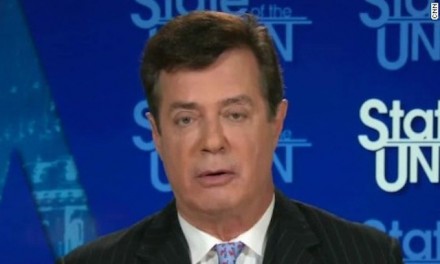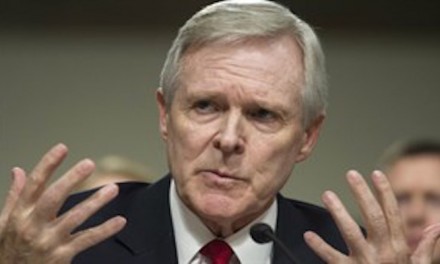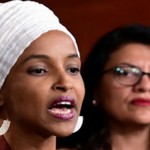Whether you agree with the widely reported statistic that there have been nearly 300 mass shootings this year might depend on how you define “mass shooting.”
In the aftermath of the Las Vegas massacre, left-leaning media outlets have been playing fast and loose with the data on mass shootings to inflate their number and suggest that white men make up a disproportionate share of the perpetrators.
John R. Lott, founder and president of the Crime Prevention Research Center, said the left uses an overly broad definition to capture gang violence and other incidents not typically considered to be mass shootings.
“It’s two different types of shootings we’re talking about: mass public shootings and shootings that occur in a public place as part of some other crime, like gang fights,” said Mr. Lott, author of “The War on Guns: Arming Yourself Against Gun Control Lies.” “So when they want to emphasize that they’re committed by whites, they use the traditional definition of mass public shootings, like the Las Vegas attack that we just had. But when they want to make people think that this happens all the time, then they use a different definition.”
On Oct. 2, the day after the Las Vegas gunman left 58 dead and nearly 500 injured, The New York Times editorial board published a graphic purporting to show 521 mass shootings over the previous 477 days.
The newspaper of record cited the Gun Violence Archive, an increasingly influential authority on the topic that defines “mass shooting” as an incident in which four or more people are “shot and/or killed.”
By the archive’s count, 277 mass shootings have been carried out this year.
That figure was cited last week in a CNN op-ed titled “How America has silently accepted the rage of white men.” The op-ed’s author, Naaz Modan, a content editor at Muslim Girl, argued that the almost-daily mass shootings are a “white man’s problem.”
For the latter claim, Ms. Modan relied on a study by the feminist website Mother Jones, which found that white men were the perpetrators in 44 of 62 mass shootings from 1982 to 2012. The Mother Jones study, however, defined “mass shooting” as “indiscriminate rampages” in which the attacker kills four or more people.
There isn’t an official definition for “mass shooting.” The FBI doesn’t define it — only the term “mass murder,” which the bureau says is “a multiple homicide incident in which four or more victims are murdered, within one event, and in one or more locations in close geographical proximity.”
In the 2015 report “Mass Murder with Firearms: Incidents and Victims, 1999-2013,” the Congressional Research Service — the policy and legal analysis center for Congress — defined “mass shooting” as an incident in which four or more people are shot dead within proximity in a single event in a public setting. This is similar to the FBI’s definition of mass murder.
The research service noted that, since the 2012 Sandy Hook massacre in Newtown, Connecticut, Congress has defined “mass killing” as three or more homicides in a single incident.
Because the Gun Violence Archive uses a low bar to define “mass shooting” — four or more injured — it’s more likely to capture commonplace gun violence, Mr. Lott said. He said it’s disingenuous to equate those incidents with mass shootings because they have different causes and different policy solutions.
“I’m not saying that gang fights aren’t important or that we shouldn’t care about it, but there are different sets of causes and solutions to deal with those than other types of shootings,” Mr. Lott said. “Gang fights are primarily fights over drug turf.”
CNN mined through the Gun Violence Archive data set and applied the definition of “mass shooting” from the Congressional Research Service. The number of shootings dropped from 273 to nine.
CNN was not the only publication to conflate the data on mass shootings.
On the morning of Oct. 2, Newsweek published an article with the headline “There’s a Mass Shooting Almost Every Day in the U.S.” Less than three hours later, an article by the same author was published with the headline “White Men Have Committed More Mass Shootings Than Any Other Group.”
In response to the Las Vegas shooting, the left-wing website ThinkProgress published an article with the headline “When we talk about mass shootings, we are talking about white men.”
But on Dec. 2, 2015, the day of the Islamic State-inspired terrorist attack in San Bernardino, California, ThinkProgress published an article that made no mention of the race of the assailants. Instead, the headline read, “If You Feel Like There is a Mass Shooting Every Day, That’s Because There Basically Is.”
On Oct. 3 at HuffPo, Sarah Ruiz-Grossman cited the Gun Violence Archive to bolster her claim that there is “a systemic problem of violence by white men in this country.”
“As the seemingly endless cycle of mass shootings in the U.S. goes on — Sunday’s attack was the 273rd this year — some people are calling for the country to reject the all-too-common response when white men commit deadly attacks: extending thoughts and prayers, but taking no real action,” she wrote.
Writing at Salon on Oct. 2, Chauncey Devega maintained that “white men are 31 percent of the population but commit 63 percent of mass shootings.” Two sentences later, he said the Las Vegas shooting was the “273rd such event in America so far this year.”
As Slate columnist Daniel Engber has argued, even if one agrees with the Mother Jones definition of “mass shooting,” it doesn’t follow that white men commit a disproportionate share of them, because men are much more likely than women to carry out such attacks.
“In a narrow sense, these stories are correct: The plurality of mass killers are white,” Mr. Engber wrote in an article published Friday. “But the notion that white men of privilege are disproportionately represented among mass shooters — indeed, that they make up ‘nearly all’ of them — is a myth.”
The Gun Violence Archive doesn’t track the race of the assailants.
Several congressional Democrats have called for action on gun violence after the Las Vegas shooting.
“This must stop,” Sen. Christopher Murphy, Connecticut Democrat, said in a statement last week. “It is positively infuriating that my colleagues in Congress are so afraid of the gun industry that they pretend there aren’t public policy responses to this epidemic. There are, and the thoughts and prayers of politicians are cruelly hollow if they are paired with continued legislative indifference. It’s time for Congress to get off its ass and do something.”
But writing in FiveThirtyEight, Maggie Koerth-Baker argued that tying policy debates to mass shootings is unlikely to curb the overall rate of gun violence in America because mass shootings are rare and each one is different.
“What we know about mass shootings suggests that they are different from the everyday deaths that happen at the end of a gun,” Ms. Koerth-Baker wrote. “The weapon is the same. So much else is different. And the distorted image we get by using one as a lens through which to view the other has consequences for our understanding of the problem and the policies that might address it.”
© Copyright (c) 2017 News World Communications, Inc.
—-
This content is published through a licensing agreement with Acquire Media using its NewsEdge technology.



















Recent Comments